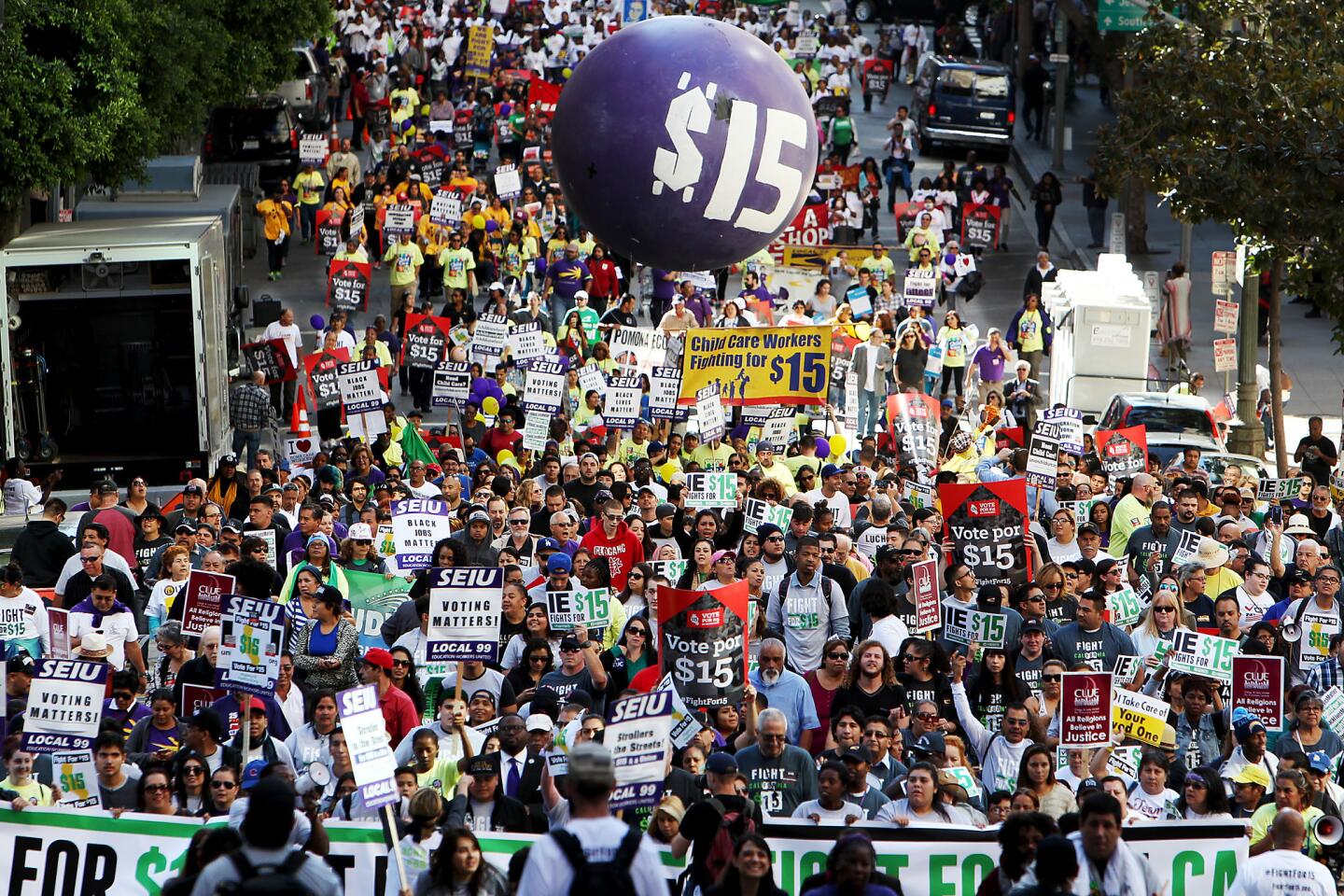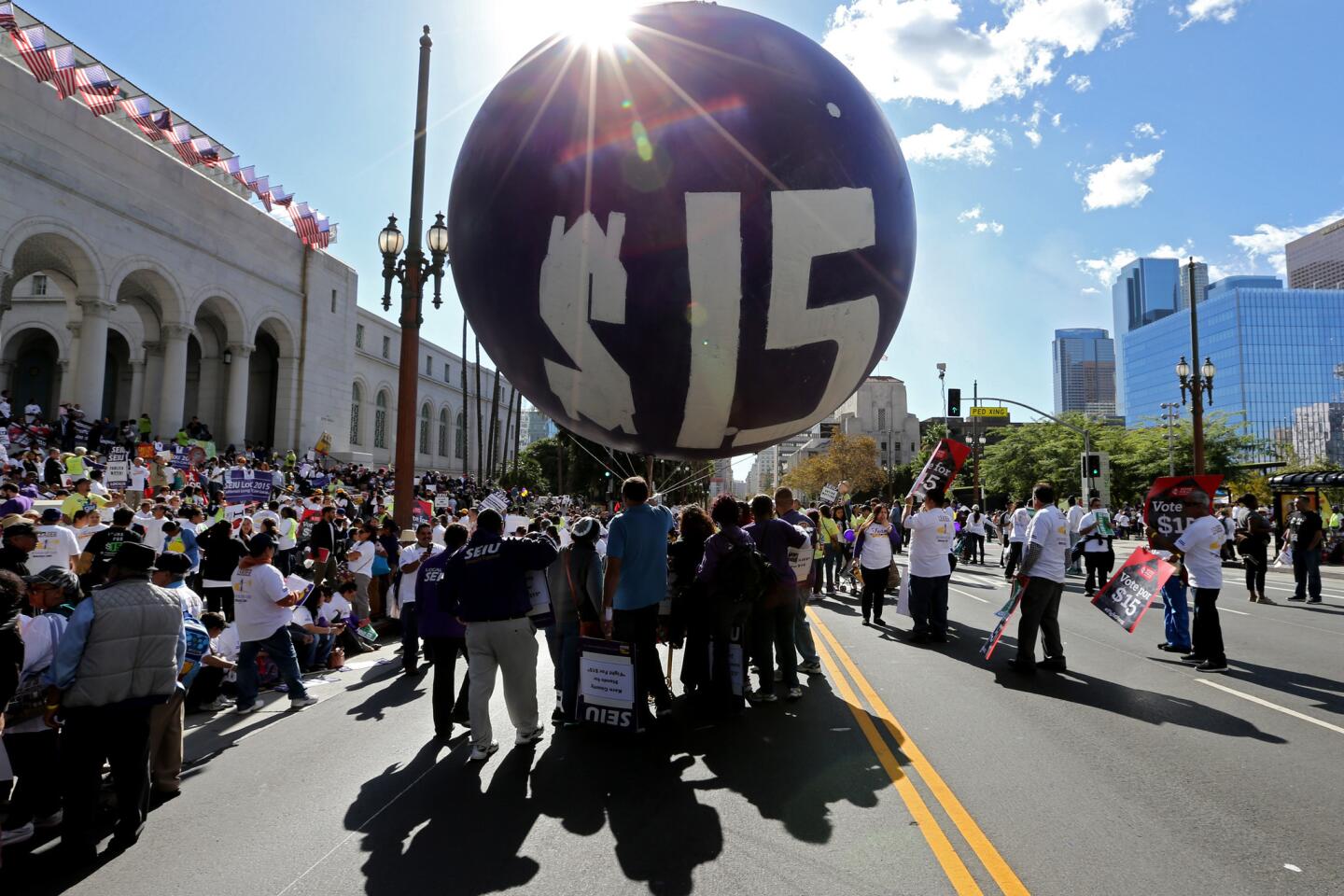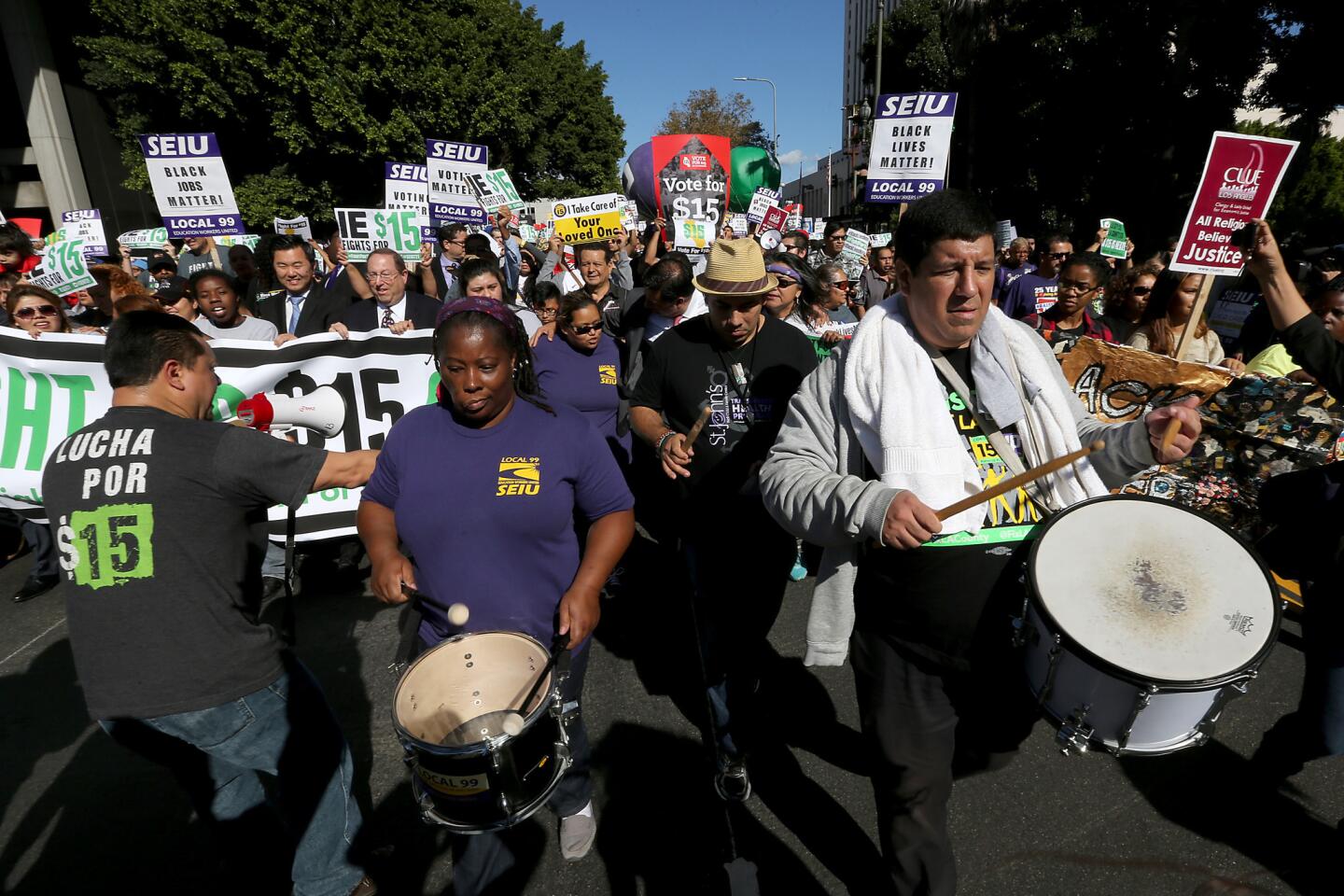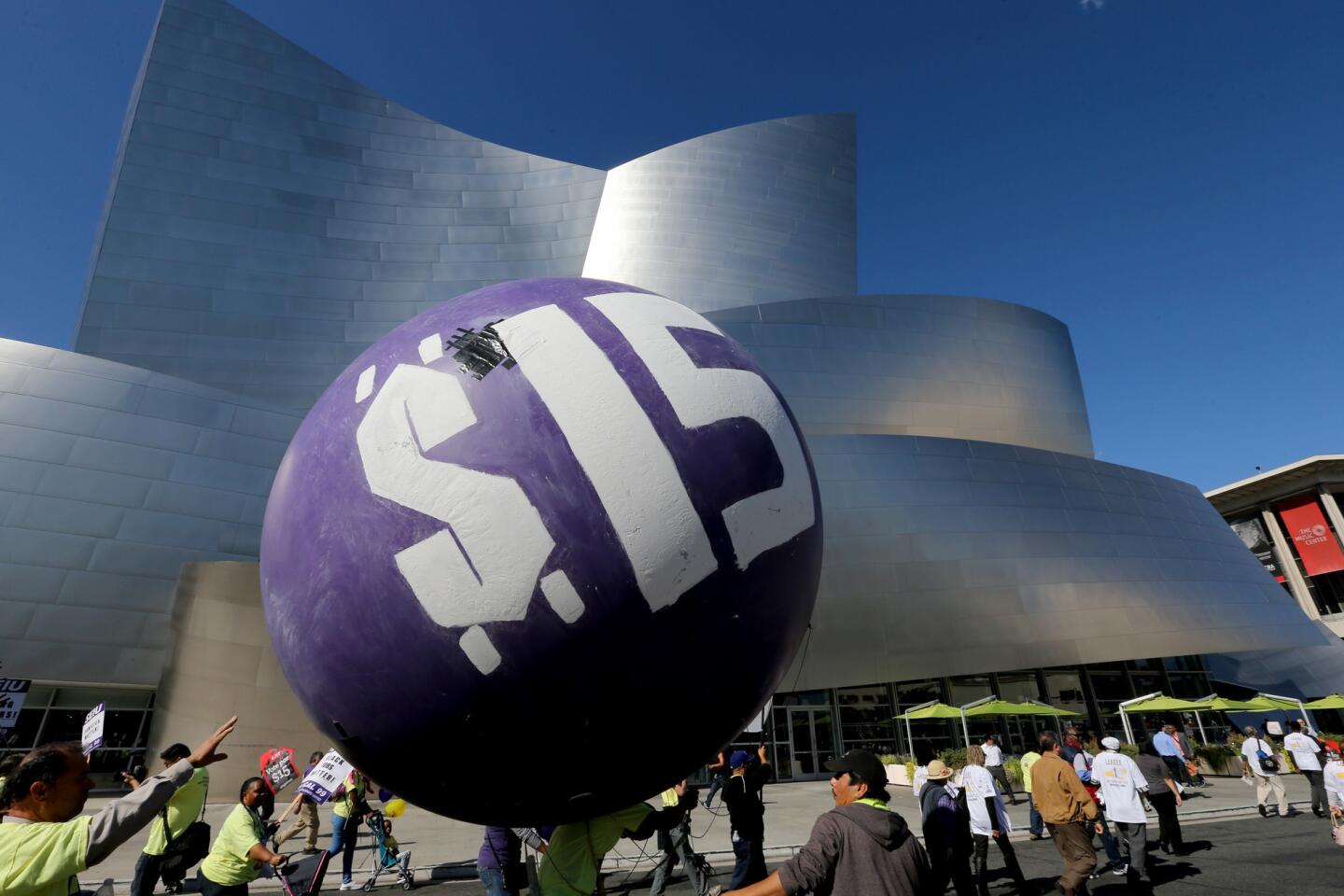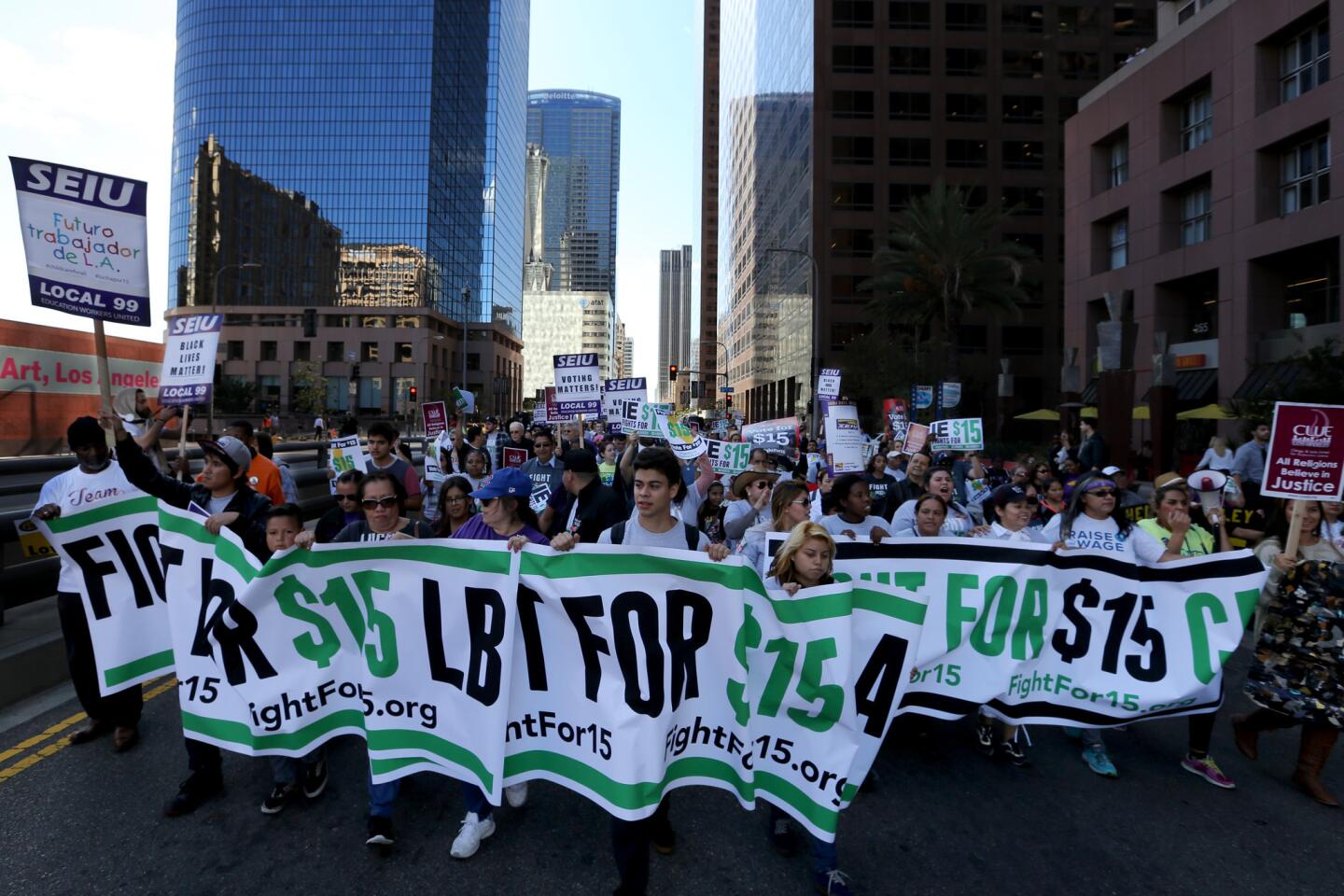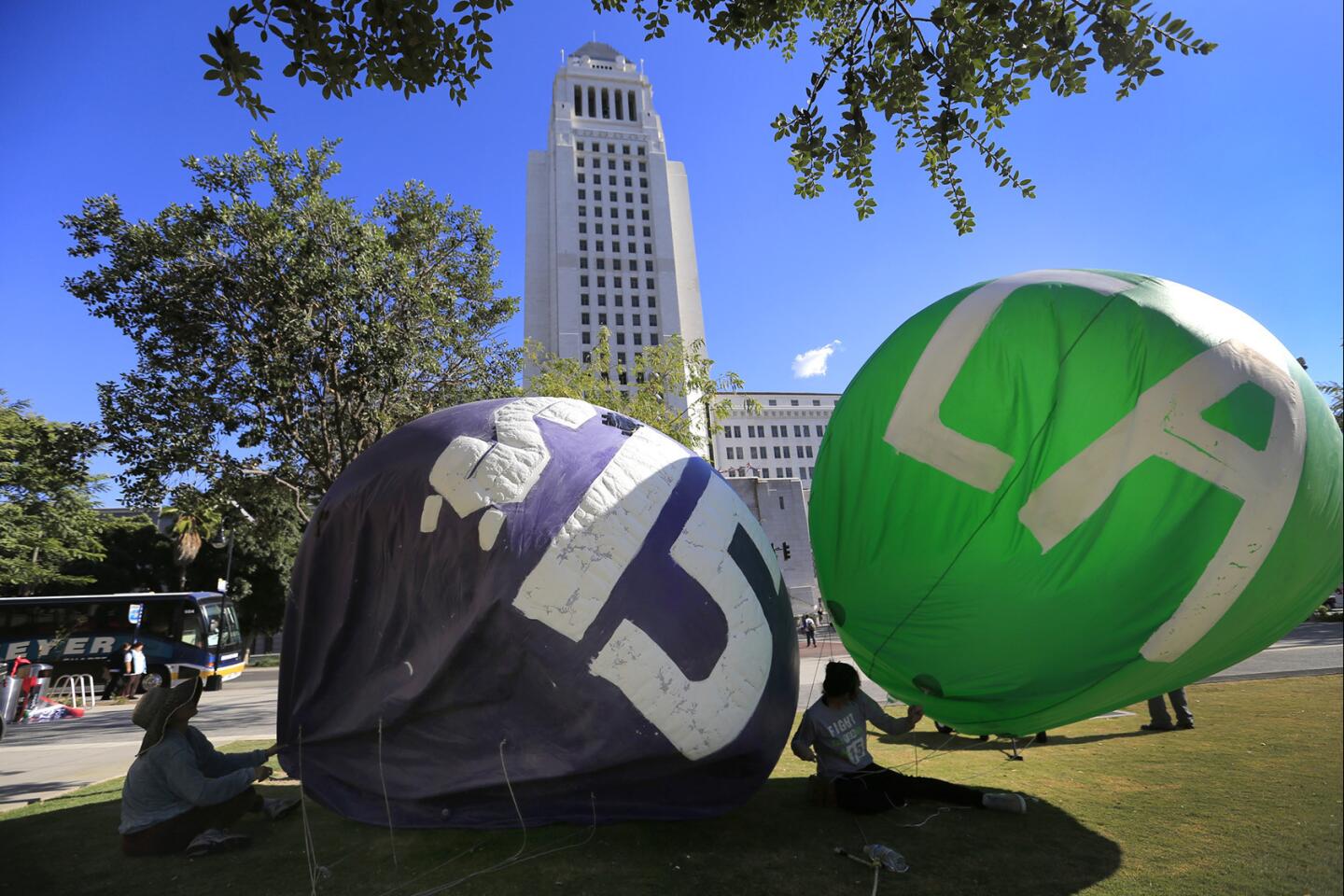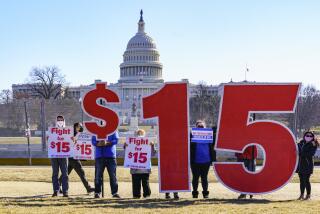Why the success of the $15 minimum wage movement has surprised its leaders
- Share via
Nearly three years ago, a group of about 200 workers at McDonald’s, Taco Bell and other New York City fast-food restaurants walked off the job and rallied for higher wages.
It was widely described as the largest series of demonstrations ever in the fast-food industry.
Fast-forward to Tuesday, and the so-called Fight for $15 movement seeking better pay for fast-food and other low-wage workers has spread to what organizers say are 270 cities across the U.S. All three Democratic presidential candidates weighed in with support on Twitter after rallies began. The governor of New York and the mayor of Pittsburgh issued orders Tuesday that will lead to a $15 minimum wage for all government workers.
How the once-fledgling campaign has captivated national political discourse is a testament to the uneasiness still felt by many Americans left out of the recovery from the Great Recession. Although jobs have continued to grow since the depths of the downturn, earnings for lower- and middle-income workers have not.
By galvanizing efforts around fast-food workers — people who many interact with on a daily basis — the movement’s organizers, backed in part by the nation’s second-largest labor union, have worked to change the public perception of low-wage work.
“For many of us, these are workers who we see every day, yet they’re invisible,” said Harley Shaiken, a UC Berkeley labor expert. “What the Fight for 15 has done is give faces, names and personal stories that many, perhaps most, working Americans can identify with.”
The federal minimum wage of $7.25 an hour has been the same since 2009, and efforts have stalled in Congress to increase wages. But at the state and local level, there has been an unprecedented wave of action to boost wages since the movement began in 2012.
Since 2014, voters and legislators in more than a dozen states have moved to increase minimum wages to levels higher than the federal threshold. City and county governments in 19 jurisdictions — including Chicago, San Francisco and Santa Fe County, N.M. — have boosted minimum wages since 2013, with five of those deciding to gradually raise pay to above $15 an hour, according to data compiled by the National Employment Law Project.
The speed of the movement’s takeoff has surprised even its leaders.

Several thousand low-wage Los Angeles workers and their supporters join a nationwide “Fight for 15” protest calling for a $15 minimum wage.
“The general consensus was that we all were crazy, that there was no way a fast-food worker would ever get $15,” said Kendall Fells, the national field director for Fight for $15. “I don’t think at the time anybody thought it could have reached this height.”
The movement also benefited from the heightened awareness of income inequality brought on by the Occupy movement, which had enveloped New York City in fall 2011, a year before the first fast-food protests.
By developing the $15-an-hour target — and sticking to it — the group has also succeeded in pushing elected officials past their comfort zones.
In Los Angeles, for example, Mayor Eric Garcetti last year initially proposed a wage hike up to $13.25 an hour by 2017, followed by inflation adjustments. The final plan passed by the City Council this summer was a raise to $15 an hour by 2020, a target followed up by the Los Angeles County Board of Supervisors.
“Fight for 15 came up with the magic number of $15 an hour, and that was a really important innovation,” said Chris Tilly, director of UCLA’s Institute for Research on Labor and Employment. “It’s really got a lot of resonance in much of the country.”
By focusing on large corporations such as McDonald’s and Yum Brands, the movement has also chosen to highlight the income disparities between low-wage workers and highly paid executives. In the years since the protests began, corporations and retailers including Wal-Mart, McDonald’s, Ikea, Gap and T.J. Maxx have agreed to raise wages for the bottom rung of workers.
“There’s a recognition that if you want to be seen as a decent employer, a good company and a place where people want to shop, you need to improve wages for your workers,” said Tsedeye Gebreselassie, a senior staff attorney with the National Employment Law Project.
Business and restaurant industry groups have criticized the fast-food workers’ movement (which has grown to include other low-wage professions such as home-care and child-care workers) as a bid by the Service Employees International Union to increase its membership.
Glenn Spencer, a vice president with the U.S. Chamber of Commerce, wrote in a blog post this week that the actions were “made-for-media protests” that featured mostly union organizers, not fast-food workers, leaving their jobs.
“Selling union memberships to this sector would be a huge revenue boost,” Spencer wrote.
Critics also have pointed to instances in which labor leaders have sought exemptions from local minimum wage ordinances that would allow some members to be paid below the minimum wage under union contracts. The Los Angeles County Federation of Labor sought such an exemption from the city’s minimum wage ordinance this year — a proposal that ultimately died.
Christin Fernandez, a spokeswoman for the National Restaurant Assn., accused the union of conducting “recycled attacks” that “detract from the good work restaurants do in communities across our country.”
The SEIU has spent tens of millions of dollars supporting the Fight for $15 campaign, but its membership numbers have declined since 2011, the year before the movements began.
The stated goal of the movement are wages of $15 an hour and union representation. Fells, the Fight for $15 field director, said business groups are trying to avoid discussion of the low wages prevalent in the fast-food industry.
At Tuesday’s demonstration in Los Angeles on the steps of City Hall, Anggie Godoy, 19, said joining a union was the next step after leaders in Los Angeles passed the $15 wage ordinance.
“We want someone to be there when we have issues,” said Godoy, who works at a McDonald’s on 7th and Alameda streets.
But many workers remained focused on the basics. Frank Trejo, 22, said the eventual $15 minimum wage would help him buy a car. He currently walks 1.4 miles from his home in Pasadena to the local McDonald’s where he works. His paycheck helps to pay the bills at his mother’s house, where he shares the space with her and his brother.
The cost of living in Los Angeles is more than his paycheck can bear, Trejo said.
“It’s hard to save,” he said, “when you have to spend so much.”
ALSO
Thousands march in L.A. as part of nationwide call to raise minimum wage
Mary J. Blige lists her New Jersey mansion with indoor basketball court
Google makes Maps, driving directions available offline
More to Read
Inside the business of entertainment
The Wide Shot brings you news, analysis and insights on everything from streaming wars to production — and what it all means for the future.
You may occasionally receive promotional content from the Los Angeles Times.
